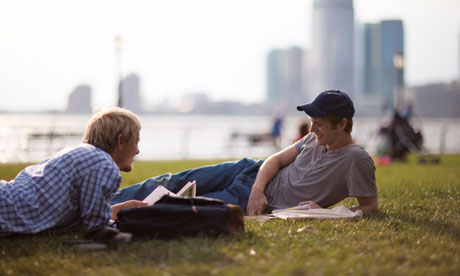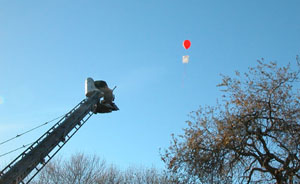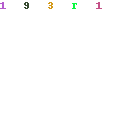
In film studies we watched this short film on youtube called 'THE beauty INSIDE' which is a story of a guy named Alex who wakes up every day as a different person. He is always the same person on the inside but on the outside he is somebody else. When he meets Leah and falls in love everything changes for him. He knows he will see her again but she will never see him.
While some background this movie it was actually a 'social' movie having premiered on facebook and getting the audience involved in that happened this is and was a very unique and interactive film where the viewers also able to submit videos saying certain lines and be in the film too. That i thought was clever and a good idea getting them more involved. Having viewers audition and send videos of themselves being Alex since he kept a video diary.
So having never seen this film before or even heard of it before my lesson, i'm happy... glad even that i was introduced to it, having been in partnership with Intel and Toshiba who produced this having their products used throughout the film, which i thought was a really smart marketing scheme. (it doesn't feel like their selling their products when really in retro spec they are.)
Broken up into a series of episodes, the story follows Alex (voiced by Topher Grace) who has a unique condition; every time he wakes up his appearance changes. He could wake up a man or woman short or tall, skinny or fat, black or white (any other ethnicity), attractive or not. This got me wondering what if this was a
real condition, and how did his parents deal with it? Was it recent? Born this way? (Lady Gaga) Just made a bunch of rhetorical questions stampede into my brain and a heard of nonsense answers wash them away.
Following Alex as he tries to deal with his situation and connect with women the only way he knows how through one-night stands. Which all changes when he meets the girl of his dreams 'Leah' only after meeting her does he find himself wishing he could have a normal life, a relationship. Finding it morally interesting as how he deals with this and takes it among himself to take action to get to know her by visiting her at work, seeing people connecting through more than just 'looks' is definitely a series worth watching.
I found this film a learning curve in society, showing how Alex deals with his condition and how it changes when he meets someone, and is suddenly at fault with his 'condition' after gradually being able to accept it. With that he becomes not only the protagonist but the antagonist as well having an ongoing fight with his conflict being his 'condition' having no control over who he wakes up as, yet having the elaboration of meeting Leah thinking differently about his 'relationships' and getting close someone and inviting them home, while watching that i saw the more vulnerable side to Alex, him actually wanting to open up to Leah showing a big step in his life. Having stated before he's never had any in his home before, he includes us the viewer on his journey. Coming to the climax and resolution i was indeed glad to see Leah back and how she hadn't abandoned Alex when he told her the truth that was a very emotional part of the story for me, if she hadn't accepted him i would of had cried! In giving him a chance we see the CODA take effect ending with Alex having his fairy-tale ending (getting the girl) and eventually stopped changing. (Awww)
With the moral of the story being... Buy Toshiba and Intel computing products!
No. That as the saying goes... 'It's what's on the inside that counts.' (which was pretty hard to count when no one can see your insides.') (deep.)
I enjoyed this film and would recommend it to watch as a feel good short. Giving it a rating of 6/10
(it's more than halfway pretty good)
 5 stars!
5 stars!


 Tilt up -
Tilt up -  Tilt down -
Tilt down - Dolly -
Dolly -  Crane -
Crane -  Ariel/ Birdseye -
Ariel/ Birdseye -  Zoom -
Zoom - 



